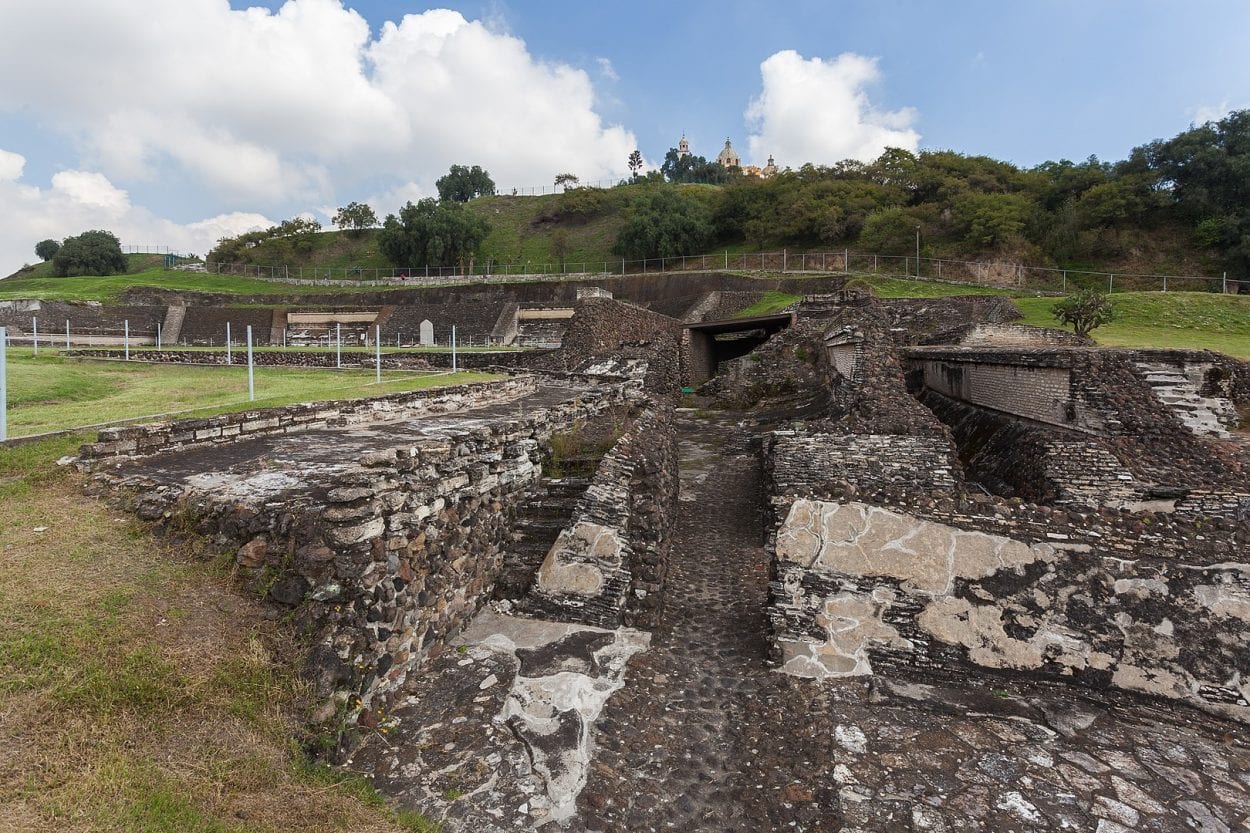The Great Pyramid of Cholula is an archaeological site and temple complex believed to be dedicated to the god Quetzalcoatl in the San Andrés Cholula, Puebla municipality of Mexico.
The Cholula pyramid is the largest by volume in the Americas, in addition to being the largest known pyramid by volume in the world, measuring at its base 450 by 450 metres (in comparison to the Great Pyramid of Egypt measuring 230 by 230 metres or the Pyramid of the Sun at Teotihuacán that measures 220 by 230 metres).
Occupation at the site began during the Late Formative Period from around 300 BC (although some archaeological remains of pottery discovered in situ date from the Middle Formative Period), with the first initial stages of the pyramid’s construction commencing during the Terminal Formative Period. The Great Pyramid was built in four stages of major construction and saw successive periods of at least nine modifications.
Early phases of the pyramid’s construction have been compared to the style and architecture of Teotihuacán, which also bears similarities in pottery forms and styles across both sites.

The first phase was built around 200 BC, named “La Conejera” and was constructed with an adobe core measuring around 10 metres square at the base.
The next main phase saw the construction of the Pyramid of the Painted Skulls between AD 200-350, completely enveloping La Conejera and consisted of seven stepped levels that led to a rectangular platform, topped with a two-story structure and the Altar of the Sculpted Skulls.
The last major period of phases was the Pyramid of the Nine Stories, a radial pyramid with stairways consisting of nine stories and a Jaguar Alter. This was later built over but eventually collapsed to give the impression of a natural hill.

During excavations of the Great Pyramid over 400 human burials have been uncovered. Most of these burials date to the Postclassic Period, showing that the Great Pyramid was an important centre of worship well after its use as a temple was discontinued. These burials include a number of human sacrifices, as demonstrated by mangled body parts and skulls from decapitated victims.
At its peak, Cholula had the second largest population in Mexico of an estimated 100,000 people living in the city complex that encircled the pyramid. Though the pre-hispanic city of Cholula remained inhabited, residents abandoned the Great Pyramid in the 8th or 9th century AD as the city suffered a drastic population drop.
Header Image Credit : Diego Delso – CC BY-SA 4.0







